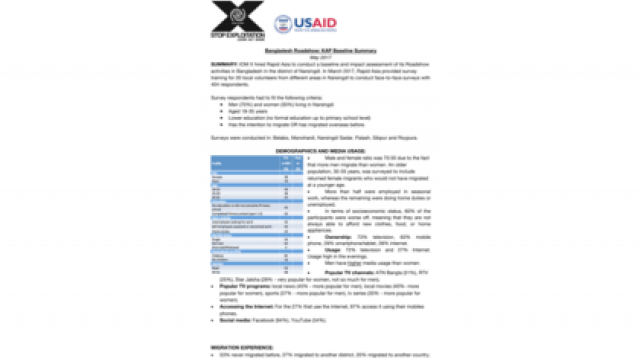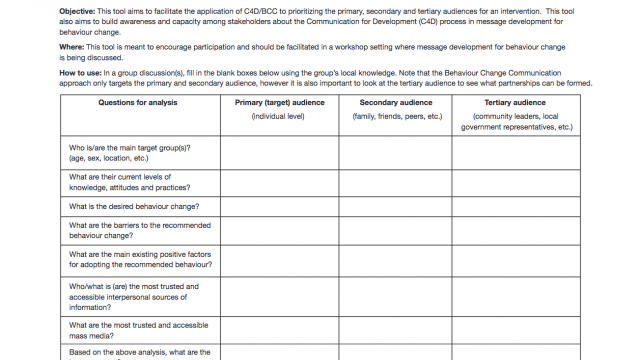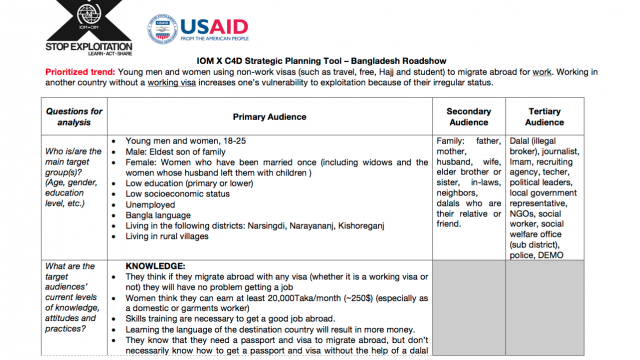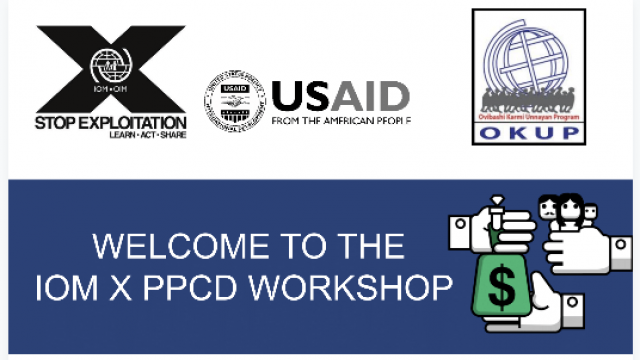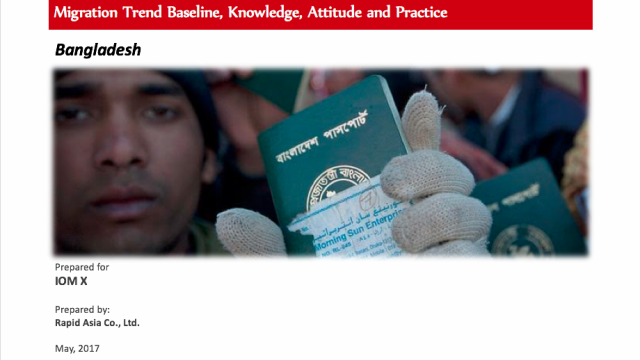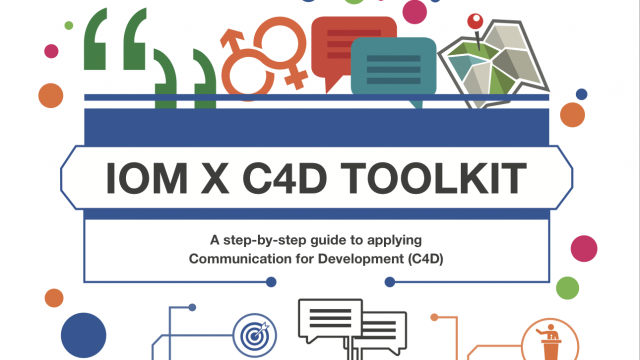1. Know Your Audience
Analysis into the root causes of, and various influences to, a problem will help in identifying the role that your organisation’s actions can play in improving the situation at hand, with support of a mix of communication efforts. A mix of relevant primary and secondary data, including research reports, government statistics, expert interviews and communication assessments, will provide useful information to better understanding the situation — not only the challenges, but also the opportunities.
The Social Ecological Model (SEM) is a useful framework during this early analysis phase. SEM helps to identify and understand the various levels of influence on a person’s knowledge, attitude and practices. This framework looks at the complex relationships between individual, interpersonal, community and societal factors. These relationships are always context specific. However, ideally, each level of influence will be addressed for optimal results in an individual’s behaviour change journey.

Each level of influence on the SEM framework will require the implementation of a different type of C4D approach. When addressing the attitudes, motivations, knowledge and behaviours of an individual at the core of the issue, behaviour change communication with its inter-personal and small group communication activities tend to be most impactful. Depending on the problem issue, sometimes these activities (e.g. migration or nutrition counselling) may need to be extended to cover select members from immediate social groups, such as family members or teachers. In many cases, however, these influential people and groups may sufficiently be engaged through community-level social mobilization activities that aim to educate and motivate larger groups of people or social networks (such as community members, peer groups or religious congregations) to take joint action in support of an issue (e.g. demanding for more equal access to, or quality of, social services).
Societal and organizational levels of influence that deal with the organization of social services, development of policies, laws and regulations, funding, etc., and actors influencing the larger public discussion (e.g. media representatives, academia and opinion leaders) are most effectively addressed with strategic and tailored advocacy measures.
CONSIDERATIONS: Working on exploitation
The factors behind the exploitation of migrants and other vulnerable populations are often crosscutting, such as corruption and lack of and/or inconsistent application of protective policies and practices. Lack of accurate information is also central, because without the right information...:
...Aspirant and current migrants do not know: how to migrate safely; what their rights are; what to expect once they arrive at their destination; what is exploitative or that exploitation is criminal; what recourse is available to them should they end up in a situation of exploitation and more. For example, IOM X conducted interviews with aspirant migrants in Cambodia and they all indicated minimal planning for their departure. None had visited a local resource centre and most were planning to travel irregularly (without a passport, visa or work permit).
..Employers and those living in more affluent host communities lack information about: the benefits of migrant labour to their economies; what rights are afforded to migrant workers; how they should be treated; and how to practice responsible consumerism to ensure that the goods and services bought are not provided by exploited labourers. For example, in a recent IOM X study, employers of domestic workers in Indonesia and Thailand expressed attitudes similar to apathy; such as not caring about exploitation of domestic workers and their labour rights.4
…The broader public (general public) lack information about: their role in contributing to environmental and societal change when it comes to advocating for change on a local, national and regional level.
Negative attitudes can create environments ripe for deception and exploitation. In demand areas, negative attitudes like xenophobia and discrimination toward migrants and minority populations perpetuate unfair treatment including, in the extreme, outright exploitation and abuse of labourers, and more commonly, apathy amongst the general public in reporting suspected exploitation of others. In source areas, there are often positive attitudes towards migration and its potential benefits, and negative ones for returned trafficking victims. Stigma and discrimination towards returned trafficking victims make it hard for these individuals to re-integrate into society and because of this social exclusion they are often at risk of being re-trafficked.
2. AUDIENCE ANALYSIS
Audience analysis identifies the various potential audiences at each level of societal influence whose knowledge, attitudes and behaviour(s) the activity(ies) is/are trying to change.
a. Identify the target audience:
There are many potential target audiences for each problem issue. For counter-trafficking activities, these might include some or all of the ones mentioned below:
- Populations vulnerable to human trafficking and exploitation:
- Current migrants in destination communities
- Aspirant migrants in origin communities
- Ethnic/religious minority populations
- Stateless persons
- Children (under the age of 18)
- Women and girls
- Populations who may be complicit in human trafficking and exploitation:
- Migration facilitators (e.g. border officials, bus drivers, etc.)
- Consumers of goods and services
- Employers
- Key influencers:
- Families of vulnerable individuals
- Community leaders such as villages chiefs, elders, religious leaders
- Celebrities
- Political leaders
b. Determine the primary, secondary and tertiary audiences:
Levels of influence introduced in the SEM framework, and guided by available evidence, determine the primary, secondary and tertiary audiences for addressing the problem at hand.
- Primary audience consists of the group(s) of individuals whose behaviours are attempted to be changed or influenced through targeted behaviour change communication efforts. Such audiences might include, aspirant or returned migrants, healthcare staff, migration counsellors, and more.
- Secondary audience refers to both formal and informal social networks and social groups whose members’ knowledge, attitudes and practices may influence the primary audience’s behaviour either positively or negatively. Typically, such audiences that are engaged with social mobilization activities include influential family members, friends, peers, co-workers and other community members.
- Tertiary audience consists of those whose actions reflect the broader social, cultural and policy factors that create an enabling environment for positive change to take place or be sustained. These might include local government representatives, law enforcement officials and media representatives.
When addressing the issue of migration for domestic work, the different audience groups might look like in the example below. Here, audience groups are further separated by location: source location for home community of aspirant migrants and demand location to target employers of domestic workers.

Specificity is important to be able to design effective activities later on. Messages for a primary audience are not likely to be drafted and disseminated the same way as messages for a tertiary audience. Sustained behaviour change is more likely to happen in a supportive environment, which consists of family and community, social and cultural norms, national policies, etc.5 A common weakness is targeting the primary audience without thinking about the secondary and tertiary audiences. This consideration becomes increasingly important when the primary audience may have less agency and/or free will to make decisions for themselves. A good example of this is considering the role of parents with regard to the decisions of their children. Likewise, the quality of care given through interpersonal communication by, say, psychosocial support counsellors, is a critical component in the successful recovery of the users of these services.
c. Define the target audience:

TIPS
The more specific the information about your target audience, the easier it is to develop targeted messages and activities.
d. Determine the audience’s Knowledge, Attitude and Practice (KAP):
The next step is to assess what the primary, secondary and tertiary audiences know about the issue at hand. What are their attitudes towards the issue? What are their current or intended practices (behaviours)? This information is assessed against the optimal levels of knowledge, attitudes and desired behaviours.
Here are some sample research questions to determine KAP in two different audience groups:
|
Source Audience (E.g. aspirant or current migrants
|
Demand Audience (E.g. employers)
|
|---|---|
|
Knowledge: What is the process most people in your community use to migrate? Attitude: How do you feel about migrating abroad? Knowledge: What kind of positive and negative experiences have you heard of other migrants having? Practice (behaviour): Have you migrated before? If so, what process did you follow? Practice (behaviour): If you intended to migrate abroad, what process would you follow? Why? |
Knowledge: What does the recruitment process for migrants look like? Knowledge: Are migrant workers entitled to the same minimum wage as national workers? Knowledge/Attitudes: What are some challenges with hiring migrant workers? Attitude: How do people in your community feel towards migrant workers? Practice (behaviour): Do you hire migrants at your workplace? |
TIP: Topic ideas for counter-trafficking activities
- Safe migration
- Purchasing ethically made products
- Shifting negative attitudes towards migrants
Information about the target audience’s knowledge, attitudes and practice comes from desk reviews, online or face-to-face surveys, focus group discussions, interviews, consultations, etc.
e. Begin to fill out the C4D Strategic Planning Tool:
Knowing the different target audiences, their characteristics, their influencers, and their current knowledge, attitudes and practices will paint a clear picture of their motivations and understanding of the issue. With all this information, it is time to fill out the C4D Strategic Planning Tool. The C4D Strategic Planning Tool enables project teams to plan an evidence-based, relevant and contextual set of activities that will target the primary, secondary and tertiary audience in the most impactful ways.
Table 1: IOM X C4D Strategic Planning Tool (put LINK)
| Questions for analysis | Primary (target) audience | Secondary audience | Tertiary audience |
|---|---|---|---|
| Who is/are the main target group(s)? (age, gender) |
|||
| What are their current levels of knowledge, attitudes and practices? |
|||
| What is the desired behaviour change? | |||
| What are the barriers to the recommended behaviour change? |
|||
| What are the main existing positive factors for adopting the recommended behaviour? |
|||
| Who/what is (are) the most trusted and accessible interpersonal sources of information? |
|||
| What are the most trusted and accessible mass media (television, radio, community radio, community theatre, etc.)? |
|||
| Based on the above analysis, what are the key messages? |
In the table below, the first part of the C4D Strategic Planning Tool is filled in with research conducted by IOM X, which includes desk review research and surveys conducted by Rapid Asia on behalf of IOM X activities in 2015 in urban areas in Thailand:
| Primary (target) audience (Individual level) |
Secondary audience | Tertiary audience | |
|---|---|---|---|
| Who is/are the main target audience(s)? (Age, sex, language, etc.) |
Employers of foreign domestic workers in Bangkok, aged 20-39, Thai national, employed outside the home, university educated, more likely to deal with domestic worker on a daily basis. | Spouse, neighbour, family members, Thai national, aged 20-39, and university educated, employed outside of the home. |
Recruitment agency, trade unions, domestic worker organizations. |
| What are their current levels of knowledge, attitudes and intended practice (KAP)? |
Knowledge about domestic worker (DW) rights: High awareness of DW rights such as a day off, fair wages, workings hours, etc. Attitude: 54% believed in the importance of DW rights. Negative attitudes towards domestic workers were prominent such as ignorance, denial and prejudice. Positive Intended Practice: |
Knowledge about (DW) rights: High awareness of DW rights such as a day off, fair wages, workings hours, etc. Attitude: Negative attitudes towards domestic workers Intended Practice: |
Knowledge: They should be (and usually are) fully aware of DW rights. Attitude: They believe in the importance of DW rights, but also equally as preoccupied in making a profit for their agency. Intended Practice: |
3. BEHAVIOURAL ANALYSIS
a. List of desired behaviour changes:
Through consultations, focus groups discussions and interviews, and community meetings with representatives from the target audience, come up with a list of desired, concrete behavioural actions (e.g. memorizing a hotline number, providing a weekly day off to their employees, visiting a Migrant Resource Centre, systematically sharing key hygiene messages with each health centre client, reporting suspected exploitation, applying for a passport, sharing positive psychosocial support messages in community meetings, etc.) and consider the following questions:
- What makes the behaviour feasible?
- What are the benefits of adopting the behaviour?
- Does the target audience have the necessary knowledge or capacity to practice the desired behaviour?
- Do they have the motivation to practice and sustain the behaviour?
b. Barriers and positive factors:
Once the desired behaviour has been identified for each audience group, it will be important to look into the factors that can make practicing this behaviour easier (positive or enabling factors) and/or harder (barriers). Gaining an understanding of and considering such factors will make it much easier to develop and execute successful interventions. To guide this assessment of potential barriers and positive factors against the recommended behaviour in a given context, think of PESTLE!
DEFINITION: PESTLE
PESTLE stands for Political, Economic, Social, Technological, Legal and Environmental considerations. Strong local leadership for social causes and particularly for counter-trafficking is a positive political factor in reducing incidences of human trafficking. A strong education system in that community and employment schemes for young people are positive economic and social factors. The presence of Migrant Resource Centres, counselling centres and helpline numbers can be technological positive factors. Existing counter-trafficking laws are legal positive factors. As for environmental factors (which can be positive or a barrier), they can include natural disasters or lack of natural resources that can cause people to migrate.
Far too often in message design, the focus is placed on the barriers to desired behaviour and less attention is paid to existing strengths. A focus on barriers, while very important, may also easily lead to message design that says "don’t do X or Y". Conveying positive messages and existing strengths of a community (such as services and resources) enables the target audience to attach personal value to the issue.
IMAGE
|
Small, gradual changes to existing behaviours tend to be easier to adopt than big changes. |
When a desired behaviour takes large amounts of time, resources and skills, it will likely be more challenging to convince target audiences to adopt it. |
TIP
People are more likely to adopt behaviours if they know that there is already a movement within their community towards adopting that behaviour or if they perceive that it is the norm.
Now fill out the following table, C4D Strategic Planning Tool - Part 2. Refer to the example below targeting aspirant male migrants to adopt safe migration practices:
| Primary audience (aspirant male migrants in rural Cambodia) |
Secondary audience (immediate family of aspirant migrants, especially parents) |
Tertiary audience (Migrant Resource Centres in rural Cambodia) |
|
|---|---|---|---|
| What is the desired behaviour? | Ability to recall the number of a Migrant Resource Centre hotline number in their province. | Ability to recall and recommend the number of a Migrant Resource Centre hotline number in their province. |
Disseminate materials in areas where aspirant migrants frequent that promote their hotline number. |
| What are the benefits of adopting of the recommended change? | Migrants can inform themselves of safe migration practices to avoid the risk of being exploited by criminals. Taking the proper measures to migrate safely can also enable them to save more money. |
Families will be aware of the services available to help their family members practice safe migration. By being able to recall the number, they can also call and find out important migration information. | More visitors to the Migrant Resource Centre. |
| What are the barriers to the recommended behaviour change? |
They might not have a cell phone or a phone at home. This is the first they’ve heard of a service like this, they are used to trusting the information their friends tell them. Misinformation from their friends. |
They might not have a cell phone or a phone at home. They trust community Lack of information about safe migration. |
Do not have the staff or resources to create creative posters promoting the services of the Migrant Resource Centre. |
| What are the factors that make this behaviour easy to adopt? |
A hotline number is easy to remember. Calling a hotline number doesn’t require someone to Family and community leaders are a strong influence in their lives. Someone in the community may have a phone that can be borrowed. |
They want their family There is a shop in town where community members can go to use telephones. They trust community |
Migrant Resource Centres are usually located in border towns and can easily intercept migrants as they pass through the border and informally chat to them about their migration plans. |
4. COMMUNICATION ANALYSIS
The last step of the analysis is to understand how the target audiences access information and what their preferences are for different media platforms. Some key questions are:
- Do they have access to media outlets like television, internet, radio, mobile phones and/or print materials?
- Is it mass media or community media, or a mix?
- What or who do they listen to?
- What do they watch?
- What TV/music/movie genre (drama, action, mystery, comedy, etc.) is popular with the target audience?
- How often are they accessing their most popular type of media?
- At what time of day?
It is not only important to understand which media platform the target audience turns to for information and entertainment, but also what are the most trusted and accessible interpersonal sources of information. For example, do they turn to local NGOs, the village chief, their teacher or their friends at school for information? Having a clear understanding of interpersonal sources will be important especially if
community-based outreach activities are being planned.
Once different sources of information have been assessed, fill out the following table. Please see the example provided below, which is filled out with the findings of a KAP baseline study conducted in Cambodia in December 2013 by Rapid Asia and MTV EXIT.
Table 4: C4D Strategic Planning Tool - Part 3
| Primary audience. Secondary audience. Tertiary audience. | |
|---|---|
| What are the most trusted and accessible interpersonal sources of information? |
Friends and family (this network can be encouraged and utilized to also reach audiences with little media penetration) Local government officer or NGOs About 30% indicated that recruitment agencies are the most reliable source of information Friends and family (Note: This information is not always consistent over the three target groups) |
| What are the most trusted and accessible mass and traditional media sources of information? (Television, radio, community radio, community theatre, etc.) |
Media penetration: Most trusted media sources for migration information: (Note: Media consumption research is often limited to the media penetration of the different mediums in broader geographic areas. Thus, it is important to do further qualitative research to find out the specifics of the target audiences’ media habits such as what TV/radio genre they listen to, what time of day, what channel, etc.) |
ENGAGE YOUR AUDIENCE
During Step 1: Analysis, involve individuals who are representatives of the target audience. Participatory techniques can include in-depth interviews, focus group discussions, small group meetings and community dialogue meetings with representatives of the target audience and relevant stakeholders.
Other participatory research activities include community mapping, transect walks, drawing a problem tree, card sorting, mapping problems, body mapping, network analysis, story telling, role playing and reflecting. Learn more about these activities by researching “Participatory Learning and Action” online.
After the analysis in the table above is done, it is time to bring it all together and start planning the communication strategy.
Have you:
- Identified the primary, secondary and tertiary audiences?
- Selected the desired behaviour change for the primary audience?
- What are the positive factors and barriers to practicing the desire behaviour change?
- Determined how the primary, secondary and tertiary audiences get their information?



